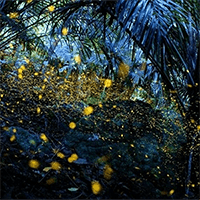Things to do in Kinkakuji/Kitano-tenmangu Area
Tenmangu Kitano Sugawara public which has been popular as a God of learning has been enshrined, the examination and employment activities, is popular as a place to pass pray as there is a divine favor for each test. The precinct, a number of cattle of the image, or better the head and stroking the cattle, has been with the disease is cured. In the spring, it is the precincts bloom is also of plum blossoms 1500, show us a view of the masterpiece. Ji historic was built in the Kamakura period is also referred to as the Golden Pavilion from Kinkaku of luxurious of the three-layer structure, high popularity from its luxurious appearance, has been known to Kyoto as a representative tourist spot. Arashiyama and is visited easy to spot because to go by bus from Gion. In this area, dressing and tea ceremony experiences, such as Me Yuzen, traditional crafts There is a wealth of activities that can be experience.
- Age 8~Age 80
- Within 1 hour /1~2 hours
- 09:30 / 10:30 / 11:30 / 13:30 / 14:30 / 15:30 / 16:30 / 17:30
It is a one-of-a-kind bracelet (anklet) making experience that is a collaboration between a braided bracelet and a power stone. The braided cords are made using a platform called Marudai, which is used in the movie. You can choose 3 power stones from about 15 types. There are about 30 types with additional charge (200 yen or 300 yen per piece). There are about 9 types of metal parts to put in between. There are about 20 types with additional charge (150 yen or 200 yen per piece). You can choose 2 colors from about 30 kinds of threads. You can choose from four types of clasp: hook, new hook (100 yen), magnet (300 yen), mantel (150 yen). Visitors are limited to one person per experience. Thank you.
親子3世代で体験させていただきました。 紐選び、石選び、紐の長さ選び、留め具選びととてもワクワクしながら作ることが出来ました。 5人それぞれ違う材料で、その人らしい組紐ブレスレットができました、 紐の色や石の種類などは違っていても、組紐のブレスレットは、家族の絆の証となりました プライベートではいつもつけています また機会がありましたら体験したいと思います ありがとうございました
- Age 1~Age 70
- Over 6 hours on the day
- 08:40 / 09:50
Get on and off at the meeting point08:40▼Nihonbashi Station Exit 2 (Namba-Shinsaibashi area)09:50▼Kyoto Station Hachijo Exit (in front of 7-Eleven)10:30▼Kinkaku-ji Temple (approx. 40 mins)Visiting fees are at the customer's expense.12:00▼Kiyomizu-dera Temple area (individual visit, free stroll, lunch on your own / approx. 3.5 hours)15:30▼Fushimi Inari Taisha Shrine (approx. 70 mins)17:00▼After enjoying the day's itinerary, start heading back.19:00▼Shinsaibashi, Dotonbori area (free stroll / approx. 1 hour)This is a shared tour, and participants come from all over the world.
- Age 8~Age 75
- 1~2 hours
- 09:30 / 10:30 / 11:30 / 13:30 / 14:30 / 16:30
W (double) version of braid and power stone bracelet. One can be made with braids and power stones, and one can be made with only braids. There are about 14 types of power stones within the price, and you can choose 3 from about 20 types for an additional charge. You can choose from four types of metal fittings: hook type, new hook (extra charge), magnet (extra charge), mantel (extra charge). Adjust the size to suit you. Visitors are limited to one person per experience. Thank you.
- Age 4~Age 100
- 1~2 hours
- 10:00 / 11:00 / 12:00 / 13:00 / 14:00 / 15:00 / 16:00
In this plan, you can choose your favorite from S course, square size (45cm x 45cm, place mat (32cm x 45cm), tote bag (S size)), and the whole process of Japanese traditional craft "Rocket dyeing" "Draw a picture" You will experience "From things to dyeing and drying". No need for painting. Children are OK! The placemat dyeing craftsman will carefully guide you. Choose from many sketches and combine them. Also, the original design is OK. After tracing the sketch, put on boots, an apron, and gloves and dye it by yourself. After dyeing, remove the drawn wax. You can easily make a simple and deep work dyed with a placemat such as a crack pattern. The work is completed in about 90 to 120 minutes and you can take it home on the day. You can choose your favorite sketch. You can also use the original design. ② Once you have decided on the sketch, trace the sketch with a brush with a wax. ③ Draw the sketch with the heated and melted wax in the brush. ③ Draw the sketch with the wax. Dye the drawn cotton fabric by immersing it in dye. Enjoy the dyeing experience by yourself. ④ Soaping work: Put the dyed cotton fabric in a kettle boiled in boiling water and remove only the wax of the fabric. ⑤ Wash the cotton cloth from which the wax has been removed, dehydrate it with a dehydrator, and then dry it. ⑥ You can take the finished work home on the day. Please bring back your precious memories in Kyoto.
They taught us patiently and diligently so it’s really recommended for beginners too. There are many design that we can chose from, you can be as creative as you can.
- Age 4~Age 100
- 1~2 hours
- 10:00 / 11:00 / 12:00 / 13:00 / 14:00 / 15:00 / 16:00
In this plan, you can choose your favorite from M course, T-shirt (90 – XXXL), tote bag (medium size), and the whole process of Japanese traditional craft "Roketsu dyeing" "Dyeing and drying from drawing" You will experience "until". No need for painting, even children are OK! !! A locust dyeing craftsman will carefully guide you. Choose from many sketches and combine them. Also, the original design is OK. Trace the sketch using a brush with wax, then put on boots, apron, and gloves and dye it yourself. After dyeing, remove the wax you drew and you're done. The part drawn with wax remains white as the original fabric without being dyed, and you can easily create simple and deep works dyed with wax, such as shades due to the thickness of the wax and crack patterns due to wax cracks. The work is completed in about 90 to 120 minutes and you can take it home on the day. ~ Flow of the day ~ ① There are many sketches available, so you can choose your favorite sketch from them. The original design is also OK ② Once the sketch is decided, trace the sketch using a brush with wax. Draw a rough sketch with the heated wax included in the brush. ③ Dye the cotton cloth with the sketch drawn with wax in the dye. Please enjoy the dyeing experience by yourself. ④ Soaping work: Put the dyed cotton cloth in a kettle with boiling water and remove only the wax from the cloth. ⑤ Wash the cotton cloth from which the wax has been removed, dehydrate it with a dehydrator, and then dry it. ⑥ You can take home the finished work on the day. Please take home your precious memories in Kyoto.
できるかなぁ〜と半信半疑で考えた下絵が、結構良い風合いで出来上がったので満足でした。結構作業が大変かと思いましたが、ご主人さんとお母さんのご協力もあり、お手軽に体験させてもらうことができました。今度は友人に紹介しようと思います。
- Age 4~Age 100
- 1~2 hours
- 10:00 / 11:00 / 12:00 / 13:00 / 14:00 / 15:00 / 16:00
In this plan, you can choose your favorite from M course, tenugui (35cmx98cm), tapestry (45cm x 90cm), goodwill (45cm x 90cm), and the whole process of Japanese traditional craft "Rouketsu dyeing" "Drawing a picture" From dyeing to drying ”. No need for painting, even children are OK! !! A locust dyeing craftsman will carefully guide you. Choose from many sketches and combine them. Also, the original design is OK. Trace the sketch using a brush with wax, then put on boots, apron, and gloves and dye it yourself. After dyeing, remove the wax you drew and you're done. The part drawn with wax remains white as the original fabric without being dyed, and you can easily create simple and deep works dyed with wax, such as shades due to the thickness of the wax and crack patterns due to wax cracks. The work is completed in about 90 to 120 minutes and you can take it home on the day. ~ Flow of the day ~ ① There are many sketches available, so you can choose your favorite sketch from them. The original design is also OK ② Once the sketch is decided, trace the sketch using a brush with wax. Draw a rough sketch with the heated wax included in the brush. ③ Dye the cotton cloth with the sketch drawn with wax in the dye. Please enjoy the dyeing experience by yourself. ④ Soaping work: Put the dyed cotton cloth in a kettle with boiling water and remove only the wax from the cloth. ⑤ Wash the cotton cloth from which the wax has been removed, dehydrate it with a dehydrator, and then dry it. ⑥ You can take home the finished work on the day. Please take home your precious memories in Kyoto.
- Age 5~Age 100
- 1~2 hours
- 13:00 / 15:00
This plan will take you to a traditional Japanese townhouse, "Machiya," and experience a flower arrangement lesson. First, after arriving, you will arrange flowers using seasonal flowers. After arranging the flowers, display your beautiful arrangement in front of the garden and take lots of wonderful photos. After that, you will be guided around the townhouse, which was built in the Meiji period. There are three storehouses and six small gardens, so you can feel the seasonal breeze. Feel free to take photos during your stay and fully experience Japanese culture.
- Age 0~Age 100
- 1~2 hours
- 13:00
This plan will take you to a traditional Japanese townhouse "Machiya" and participate in a tea ceremony in traditional costume in Kyoto. First, after arriving, you will be quickly dressed in a kimono made of real silk. After that, you will be guided around the townhouse built in the Meiji era. Listen to an explanation about the tea ceremony in the tea room and enjoy tea. You can experience the spirit of wabi-sabi as if you have traveled back in time to the Meiji era. Feel free to take photos during your stay and fully experience Japanese culture.
- Age 1~Age 70
- Over 6 hours on the day
- 07:30
07:30-08:30: Pick-up/drop-off/transfer to hotel/private inn Hotels/private inns within the Osaka Loop Line 10:00 ▼ Kiyomizu-dera area (individual worship, free stroll, free lunch/approximately 3 hours) Recommended sightseeing course Course 1: Kiyomizu-dera (customer pays admission fee) - Ni-san-nen-zaka - Ishibe-koji - Gion·Hanami-koji-dori - Yasaka Shrine You can visit your favorite spots according to your stamina and time~Course 2: Kimono experience (Customers who are interested can wear a kimono and enjoy the old townscape and touring Kiyomizu-dera Temple. Let's take pictures of the wonderful moment.) (There are many kimono shops near Kiyomizu-dera Temple and Fushimi Inari Taisha Shrine. We recommend renting a kimono at a shop at Kiyomizu-dera Temple and returning it at a shop at Fushimi Inari Taisha Shrine. The fee is at the customer's expense.) 13:30 ▼ Fushimi Inari Taisha Shrine (individual visit and free stroll / about 70 minutes) 16:00 ▼ Nara Park (individual visit and free stroll / about 1.5 hours) "Deer and autumn leaves" interweave "Nara Park" The contrast between the autumn leaves and evergreen trees is vivid Recommended tourist spot [Todaiji Temple] (Admission fee is at the customer's expense.) Todaiji Temple was built during the Nara period. Nara is popular with tourists and once served as the capital of Japan. It is registered as a World Heritage Site as one of the "Cultural Monuments of Ancient Nara" by UNESCO. Todaiji Temple has eight national treasure buildings, 14 buildings with 24 national treasure Buddha statues, and nine other national treasures, including paintings and books. The famous Great Buddha, the Great South Gate, the Kongorikishi statues, and the Hokkedo Hall, as well as the Buddha statues enshrined within, are all national treasures. There are very few places in Japan where you can see so many national treasures at once. Admission fees: Todaiji Temple Great Buddha Hall: 600 yen for adults (junior high school students and above), 300 yen for elementary school students; Great Buddha Hall and Todaiji Museum: 1000 yen for adults (junior high school students and above), 400 yen for elementary school students 17:30▼After a fun day of sightseeing, we start to head back. 18:30Shinsaibashi, Dotonbori area (Guests on the course that takes you to your hotel or guesthouse should wait for the shuttle bus. When the shuttle bus arrives, we will take you back to your hotel or guesthouse and the tour will end.)This is a mixed tour, and participants come from all over the world.
- Age 1~Age 70
- Over 6 hours on the day
- 08:40 / 09:50
Boarding and disembarking at the meeting point 08:40▼Nihonbashi Station Exit 2 (Namba-Shinsaibashi area) 09:50▼Kyoto Station Hachijo Exit (in front of 7-Eleven) 10:00▼Kiyomizu-dera area (individuals must visit the temple, stroll around freely, and have lunch at their leisure / approx. 3 hours) Recommended sightseeing course Course 1: Kiyomizu-dera Temple (customers are responsible for admission fees) - Ni-Sannenzaka - Ishibekoji - Gion·Hanamikoji-dori - Yasaka Shrine You can visit your favorite spots according to your stamina and time~Course 2: Kimono experience (Customers who are interested can wear a kimono and enjoy the old townscape and touring Kiyomizu-dera Temple. Let's take pictures of the wonderful moment.) (There are many kimono shops near Kiyomizu-dera Temple and Fushimi Inari Taisha Shrine. We recommend renting a kimono at a shop at Kiyomizu-dera Temple and returning it at a shop at Fushimi Inari Taisha Shrine. The fee is at the customer's expense.) 13:30 ▼ Fushimi Inari Taisha Shrine (individual visit and free stroll / about 70 minutes) 16:00 ▼ Nara Park (individual visit and free stroll / about 1.5 hours) "Deer and autumn leaves" interweave "Nara Park" The contrast between the autumn leaves and evergreen trees is vivid Recommended tourist spot [Todaiji Temple] (Admission fee is at the customer's expense.) Todaiji Temple was built during the Nara period. Nara is popular with tourists and once served as the capital of Japan. It is registered as a World Heritage Site as one of the "Cultural Monuments of Ancient Nara" by UNESCO. Todaiji Temple has eight national treasure buildings, 14 buildings with 24 national treasure Buddha statues, and nine other national treasures including paintings and books. The famous Great Buddha, the Great South Gate, the Kongorikishi statues, and the Hokkedo Hall, as well as the Buddha statues enshrined within, are all national treasures. There are very few places in Japan where you can see so many national treasures at once. Admission fee: Todaiji Temple Great Buddha Hall: 600 yen for adults (junior high school students and above), 300 yen for elementary school students; Great Buddha Hall and Todaiji Museum: 1000 yen for adults (junior high school students and above), 400 yen for elementary school students 17:30▼After a fun day of sightseeing, we start heading back. 18:30Shinsaibashi, Dotonbori area (free time/about 1 hour)This is a mixed tour, and participants come from all over the world.
- Age 0~Age 100
- 1~2 hours
- 18:00
You can enjoy the fantastically lit up 140-year-old townhouse, a cultural asset. The townhouse is lit up in hopes of ending the COVID-19 pandemic. Handmade lights made with an abundance of Japanese materials, such as washi paper, wood, and sake barrels, warmly illuminate the six gardens. Please enjoy the illuminated townhouse (building and garden) to your heart's content. This course will serve you carefully prepared kaiseki cuisine. Enjoy delicious food along with the beautiful lighting.
- Age 0~Age 100
- 1~2 hours
- 11:00 / 13:00
A very popular traditional bento served at tea parties that has been passed down for about 100 years. Bento is a menu that has been passed down at Tomidaya for 100 years. A tour of the townhouse, which is a cultural property, is also included. We will show you around the 140-year-old townhouse "Tomitaya" in Nishijin, Kyoto. Tomidaya was designated as a nationally registered tangible cultural property in 1999, and as a ``Museum of Nishijin Life'', the building is open to the public and the customs of Nishijin, Kyoto are introduced. Machiya life has been shaped by unchanging prayers, wishes, and gratitude since ancient times. Tomidaya started out as a production wholesaler in Nishijin about 140 years ago. This building is built by mixing charcoal into the land and closing the demon gate with amulets and salt, and enshrines Kojin (the god of fire), Benten (the god of water), and Yaoyorozu gods. Masu. In addition, there is a treasure trove where the spirit of gratitude that the 11th generation received when he jumped into the fire and saved the deity during the great fire at Ise Jingu in the Meiji period is enshrined, and is used in daily life. We are here to show you the spirit of hospitality that lives on in the past, the spirit of valuing God, and the way people have lived through generations, such as drinking tea, dancing Noh, and valuing culture.
- Age 13~Age 90
- 2~3 hours
- 12:00
A historically designed Kyoto townhouse can be rented exclusively for four or more people. You can spend a luxurious time. You can enjoy a special and unique experience of watching the beautiful dance of the maiko, traditional Japanese games, and Japanese cuisine prepared by a chef to your heart's content. Enjoy an elegant time with your family and loved ones in a secluded space. After watching the performance, you can enjoy matcha tea and Japanese sweets with the maiko and take photos. Please feel free to spend your time while enjoying the elegant Kyoto dialect of the maiko.
- Age 13~Age 99
- 2~3 hours
- 12:00
Enjoy hospitality in a 120-year-old Kyoto machiya townhouse, where you can feel at home and enjoy a special atmosphere that is different from your usual trip. Experience making temaki sushi with the landlady. You can participate alone. You can make your own original temaki sushi using carefully selected seafood and seasonal vegetables from Nishiki Market, known as "Kyoto's Kitchen." -Experience Schedule- 11:50 Meet at the site (Meet at the Kyoto machiya townhouse) 12:00 Start making temaki sushi with the landlady - You can learn about Kyoto's food culture before and after the meal, such as an explanation of the ingredients for the meal. 14:00 End at the site
- Age 18~Age 100
- 2~3 hours
- 13:00
You can wear a traditional uchikake with embroidery that cannot be reproduced today. After getting ready, you will pray to the gods, exchange rings, sign the marriage certificate, and take a commemorative photo to the music of gagaku in the Noh room. The Tomitaya staff will be serving you in a formal kimono, and everyone will be welcomed in a formal kimono.
最近チェックしたプラン
Please wait a moment
![[Kyoto Nijo Jokita] Experience making bracelets (anklets are also possible) of power stones and Kyoto braids (braids)の画像](https://img.activityjapan.com/10/29277/10000002927701_o7ecBU6q_3.JPG?version=1716006857)
![[Day trip | Pick-up from city hotels] Ancient Kyoto Japanese-style tour: Kinkaku-ji Temple - Kiyomizu-dera Temple - Fushimi Inari Taisha Shrineの画像](https://img.activityjapan.com/10/55487/10000005548701_P3BiVCAd_3.jpg?version=1733822342)
![[Kyoto Nijo Jokita] W (double) braid (braid) and power stone bracelet making experienceの画像](https://img.activityjapan.com/10/41769/10000004176901_Sy9J09zs_3.JPG?version=1649758326)
![[Kyoto / Saikyogoku] Enjoy the 100% craftsmanship experience of traditional rocket dyeing! No need to draw, even children are OK (square size, place mat, tote bag)の画像](https://img.activityjapan.com/10/38533/10000003853301_qgB2j5KG_3.jpg?version=1631428749)
![[Kyoto/Nishikyogoku] Enjoy a 100% craftsmanship experience of traditional rocket dyeing! No need to draw, children are OK (T-shirt, tote bag)の画像](https://img.activityjapan.com/10/38536/10000003853601_qgB2j5KG_3.jpg?version=1631428867)
![[Kyoto/Nishikyogoku] Enjoy a 100% craftsmanship experience of traditional rocket dyeing! No need to draw, even children are OK (tenugui, tapestry, noren)の画像](https://img.activityjapan.com/10/38535/10000003853501_qgB2j5KG_3.jpg?version=1631428808)
![[Kyoto Nishijin] Tomidaya Flower Arrangement Experienceの画像](https://img.activityjapan.com/10/56323/10000005632301_PQKR0hle_3.JPG?version=1726808951)
![[Kyoto Nishijin] Tour a 140-year-old townhouse, try on a kimono and experience the tea ceremonyの画像](https://img.activityjapan.com/10/56320/10000005632001_PQKR0hle_3.JPG?version=1726822322)
![[13-person team/Pick-up from city hotels] Kyoto, Nara, Kiyomizu-dera Temple, Kimono experience, Yasaka Shrine, Fushimi Inari Taisha Shrine, Nara Parkの画像](https://img.activityjapan.com/10/55578/10000005557801_P3BiVCAd_3.jpg?version=1722496202)
![[Day Trip] Kyoto, Nara, Kiyomizu-dera Temple, Kimono Experience, Yasaka Shrine, Fushimi Inari Taisha Shrine, Nara Park, Todaiji Temple Day Trip (Departing from Osaka/Kyoto)の画像](https://img.activityjapan.com/10/55460/10000005546001_P3BiVCAd_3.jpg?version=1730786226)
![[Kyoto/Nishijin] Tomidaya Machiya Light-up Kaiseki Dinner [Includes Machiya Tour]の画像](https://img.activityjapan.com/10/36500/10000003650001_xyLMlfkE_3.jpg?version=1656039186)
![[Kyoto/Nishijin] You can enjoy a 100-year-old traditional lunch box at a townhouse where the gods live (with tour of the townhouse)の画像](https://img.activityjapan.com/10/51578/10000005157801_aIipu863_3.jpeg?version=1698287285)
![[Kyoto, Nishijin] Kyoto Machiya plan limited to one group per day: "Kyoto cuisine, playing with a maiko, tea ceremony and Japanese sweets"の画像](https://img.activityjapan.com/10/55967/10000005596701_nfpLyiSA_3.jpg?version=1732536362)
![[Kyoto, Nishijin] Experience making hand-rolled sushi with the proprietress. Ladies' parties and couples are welcome, and you can relax in the private space of a historically designed Kyoto townhouse. You can come empty-handed.の画像](https://img.activityjapan.com/10/55846/10000005584601_AVWlGGNt_3.jpg?version=1732536422)
![[Kyoto/Nishijin] The oldest traditional Japanese wedding ceremony in a historic Kyomachiya-with traditional embroidery costumes and hair makeupの画像](https://img.activityjapan.com/10/46836/10000004683601_ur3AnChO_3.jpeg?version=1676425870)







